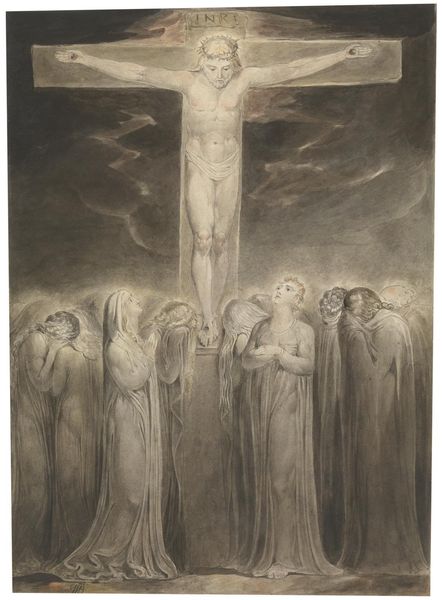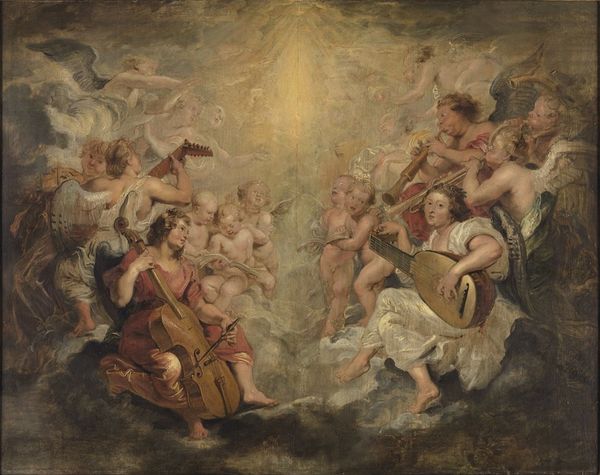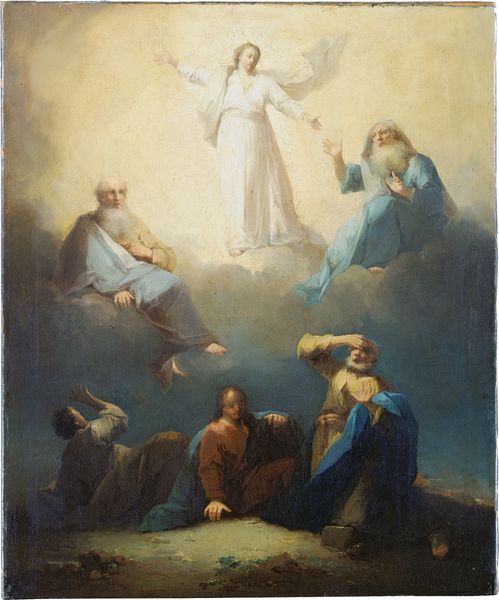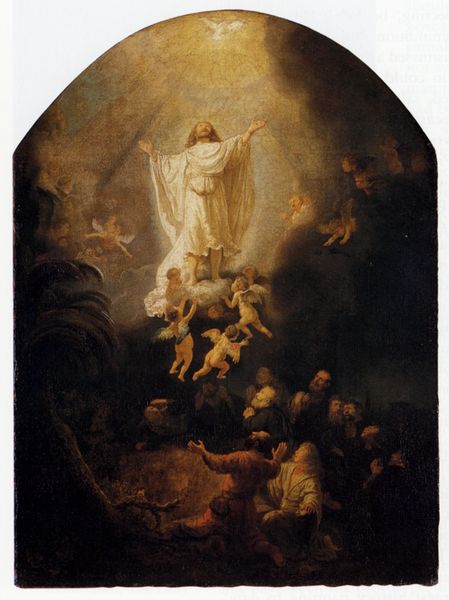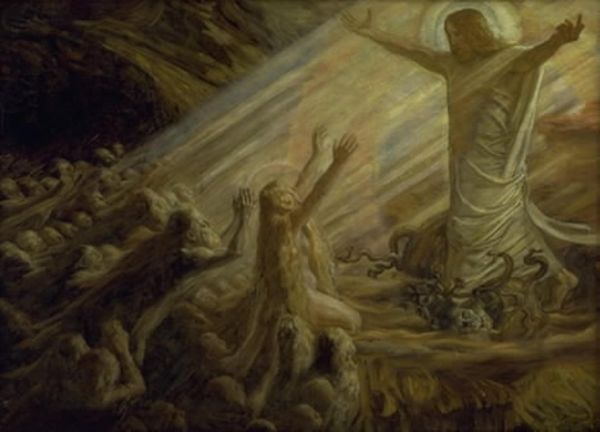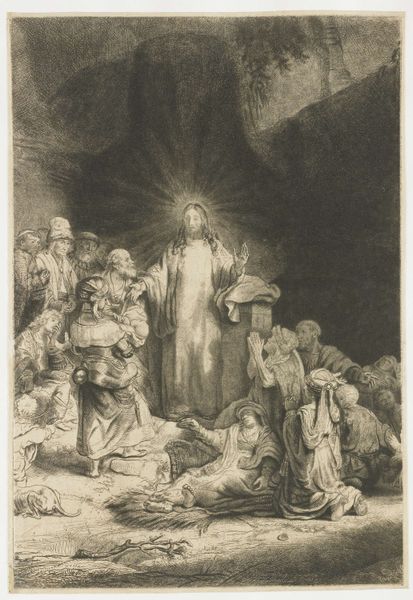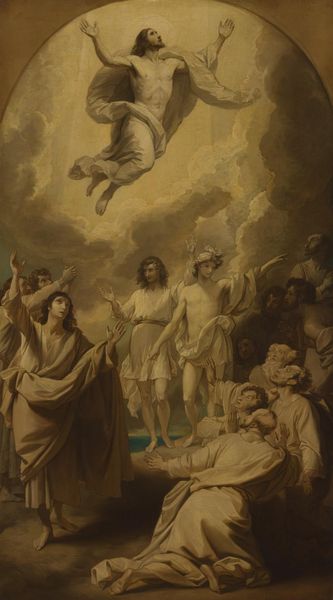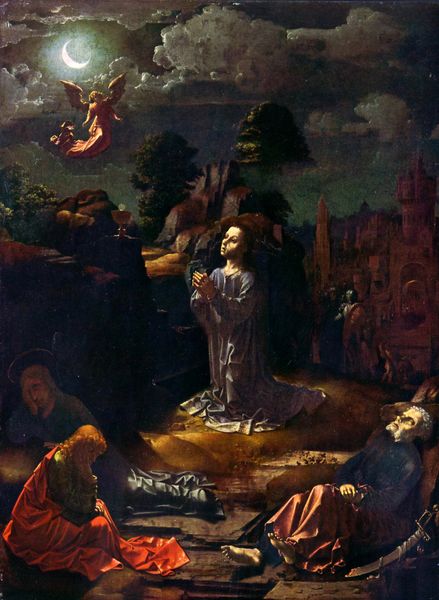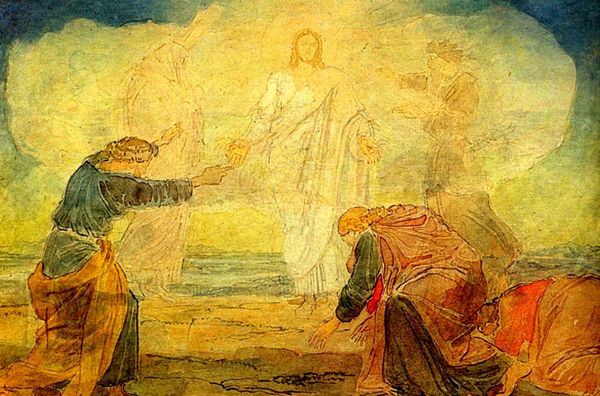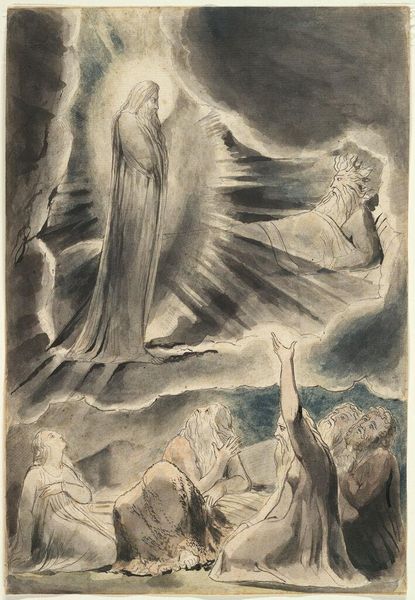
tempera, painting, gouache, watercolor
#
gouache
#
narrative-art
#
tempera
#
painting
#
gouache
#
landscape
#
figuration
#
oil painting
#
watercolor
#
symbolism
#
watercolour illustration
#
history-painting
#
watercolor
Copyright: Public Domain: Artvee
Editor: This is Hans Thoma’s "Annunciation to the Shepherds," created in 1906 using tempera and gouache. It has a somewhat dreamlike quality, a real contrast between the dark earth and the glowing sky. How do you interpret this work within its historical context? Curator: The scene depicts a biblical narrative but reflects a fin-de-siècle yearning for spiritual meaning amid rapid societal changes. Consider the art market's evolving tastes around 1900 – increasingly favoring emotional or symbolic content over strict realism. The prevalence of symbolism in response to industrialisation, perhaps? Editor: I see what you mean. It’s not just a straightforward biblical scene, it’s almost… yearning. The figures, the colors – it all seems to hint at something deeper than just the surface narrative. The angel doesn't seem especially powerful, it almost seems empathetic? Curator: Exactly. How do you think the use of tempera and gouache contribute to this feeling? The slightly muted palette and soft edges are a conscious aesthetic choice, perhaps influenced by the rise of interest in 'primitive' or folk art. It allowed the artist to subtly manipulate the emotional tone and suggest vulnerability. This creates a contrast with traditional, authoritative religious imagery. Editor: The subdued tones do feel almost… fragile. Like it's meant to be approachable rather than awe-inspiring. What was Thoma’s relationship with the art establishment at this time? Curator: Thoma positioned himself somewhat outside the mainstream academic circles while still enjoying significant recognition. He aimed to engage the public directly, championing the role of art as a moral and cultural compass. This "accessibility" becomes another layer of interpretation, reflecting on the social role of art itself, moving from elitist towards the popular. Editor: That makes a lot of sense. I didn’t consider how deliberate this approach could be in terms of reaching a specific audience, moving away from rigid establishment norms! Curator: It demonstrates that an artist’s intentions are complex, shaped by the art world but also contributing to it. A work becomes a part of the ever changing cultural milieu, it takes active part and creates changes within.
Comments
No comments
Be the first to comment and join the conversation on the ultimate creative platform.
